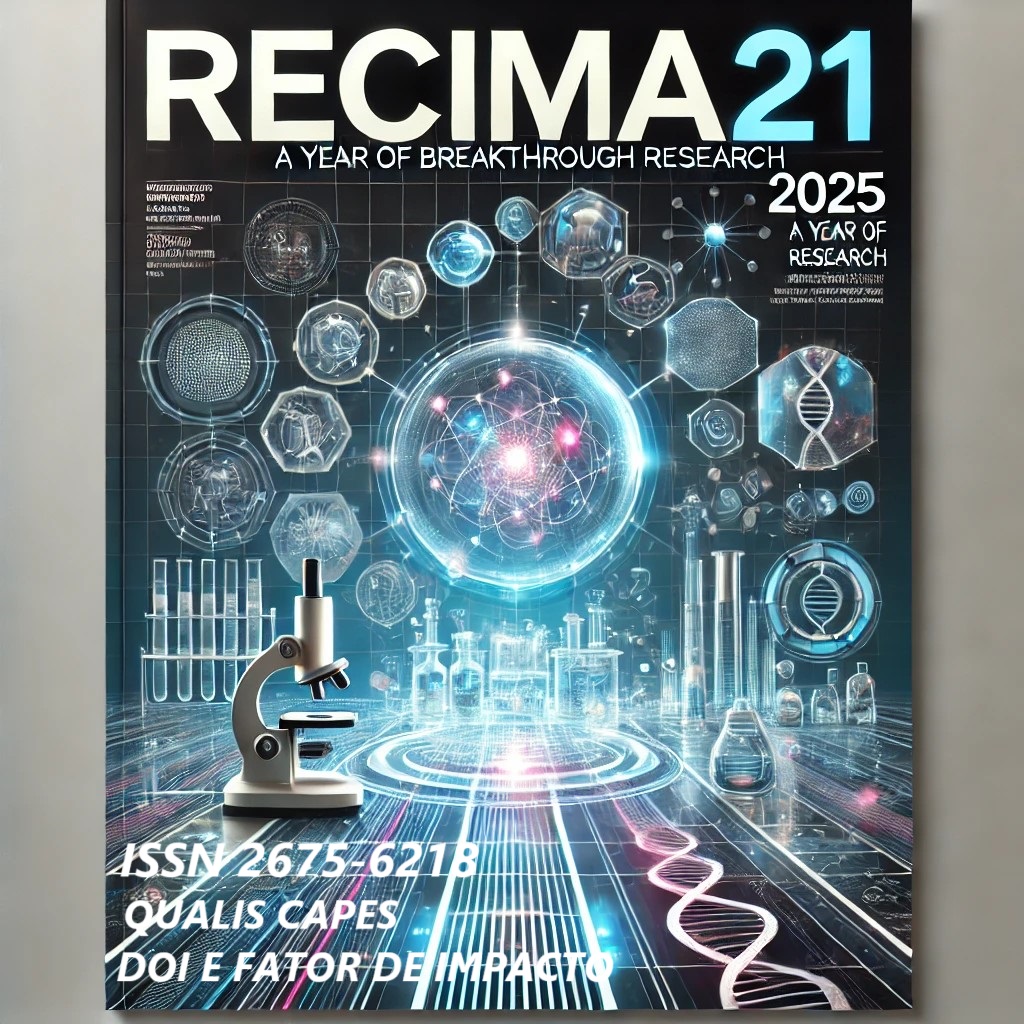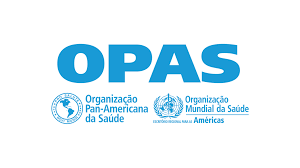SPATIOTEMPORAL EVOLUTION OF SKIN CANCER DEATHS IN THE MALE POPULATION IN CEARÁ
DOI:
https://doi.org/10.47820/recima21.v6i11.6856Keywords:
epidemiology, mortality, Skin NeoplasmsAbstract
The study analyzed the spatiotemporal evolution of skin cancer mortality among men in Ceará, Brazil, between 2012 and 2021, using data from the Mortality Information System (SIM/DATASUS), based on ICD-10 code C44. A total of 736 deaths were recorded during the period, showing an increasing trend, especially between 2019 and 2021, with an annual average of 93 deaths. The most affected age group was 80 years or older, accounting for 52.2% of the cases (383 deaths), indicating greater vulnerability among older adults. A predominance was observed among brown-skinned men (55.4%), while yellow-skinned men presented the lowest rates (0.4%). Regarding marital status, most were married (51.4%), and in terms of education, lack of schooling was most frequent (39.8%), suggesting the influence of socioeconomic factors on prevention and access to healthcare services. The home was the most common place of death (60.3%), possibly reflecting limitations in medical care. The spatial analysis revealed regional disparities: Guaramiranga stood out in 2015, with rates between 21.5 and 26.9 deaths per 100,000 inhabitants, while Pires Ferreira and Farias Brito recorded the highest coefficients, ranging from 55.4 to 69.2 per 100,000. It is concluded that skin cancer mortality among men in Ceará shows continuous growth and uneven distribution, reinforcing the need for prevention and surveillance strategies targeting the most affected regions and socially vulnerable groups.
Downloads
References
AGÊNCIA REGULADORA DO CEARÁ. Pires Ferreira. Agência Reguladora do Ceará, 2021. Disponível em: https://www.bing.com/search?q=Pires+ferreira+temperatura+e+media+anual. Acesso em: 15 nov. 2023.
AZEVEDO, M. L. F.; MENDONÇA, M. A. Estudo epidemiológico do câncer de pele no Brasil de 2009 a 2019. Revista Ibero-Americana de Humanidades, Ciências e Educação, São Paulo, v. 8, n. 6, jun. 2022. DOI: https://doi.org/10.51891/rease.v8i6.5941
BOING, A. F.; ANTUNES, J. L. F. Condições socioeconômicas e câncer de cabeça e pescoço: uma revisão sistemática de literatura. Ciência & Saúde Coletiva, v. 16, n. 2, p. 615–622, fev. 2011. DOI: https://doi.org/10.1590/S1413-81232011000200025
BRASIL. Câncer de pele. Brasília: Ministério da Saúde, 2021. Disponível em: https://www.gov.br/saude/pt-br/assuntos/saude-de-a-a-z/c/cancer-de-pele. Acesso em: 20 out. 2023.
BROWN, R. V. S. et al. Mortalidade por melanoma maligno da pele em idosos do Brasil: 2001 a 2016. Anais Brasileiros de Dermatologia, v. 96, p. 34–39, 2021. DOI: https://doi.org/10.1016/j.abd.2020.08.002
CARVALHO, M. S.; SOUZA-SANTOS, R. Análise de dados espaciais em saúde pública: métodos, problemas, perspectivas. Cadernos de Saúde Pública, Rio de Janeiro, v. 21, n. 2, p. 361–378, mar./abr. 2005. DOI: https://doi.org/10.1590/S0102-311X2005000200003
EID, R. T.; ALCHORNE, M. M. A. Câncer na pele negra. Revista Brasileira de Clínica Médica, v. 9, n. 6, p. 418–422, 2011.
FUNDAÇÃO CEARENSE DE METEOROLOGIA E RECURSOS HÍDRICOS. Catunda. [S. l.]: Funceme, 2019. Disponível em: https://www.funceme.br. Acesso em: 15 nov. 2023.
FUNDAÇÃO CEARENSE DE METEOROLOGIA E RECURSOS HÍDRICOS. Guaramiranga. [S. l.]: Funceme, 2019. Disponível em: https://www.funceme.br. Acesso em: 15 nov. 2023.
GLOSTER JR, H. M.; NEAL, K. Skin cancer in skin of color. Journal of the American Academy of Dermatology, v. 55, n. 5, p. 741–764, 2006. DOI: https://doi.org/10.1016/j.jaad.2005.08.063. DOI: https://doi.org/10.1016/j.jaad.2005.08.063
HIGGINS, S. et al. Review of Nonmelanoma Skin Cancer in African Americans, Hispanics, and Asians. Dermatologic Surgery, v. 44, n. 7, p. 903, jul. 2018. DOI: https://doi.org/10.1097/DSS.0000000000001547
INSTITUTO BRASILEIRO DE GEOGRAFIA E ESTATÍSTICA. Cidades e estados: Ceará. Rio de Janeiro: IBGE, [s. d.]. Disponível em: https://www.ibge.gov.br/cidades-e-estados/ce.html. Acesso em: 19 out. 2023.
INSTITUTO BRASILEIRO DE GEOGRAFIA E ESTATÍSTICA. Educação. Rio de Janeiro: IBGE, [s. d.]. Disponível em: https://educa.ibge.gov.br/jovens/conheca-o-brasil/populacao/18317-educacao.html. Acesso em: 31 mar. 2023.
INSTITUTO NACIONAL DE CÂNCER JOSÉ ALENCAR GOMES DA SILVA. Câncer de pele não melanoma. Brasília: Ministério da Saúde, 2022. Disponível em: https://www.gov.br/inca/pt-br/assuntos/cancer/tipos/pele-nao-melanoma. Acesso em: 28 out. 2023.
INSTITUTO NACIONAL DE CÂNCER JOSÉ ALENCAR GOMES DA SILVA. Estimativa 2020: incidência de câncer no Brasil. Rio de Janeiro: INCA, 2019.
LENS, M. B.; DAWES, M. Global perspectives of contemporary epidemiological trends of cutaneous malignant melanoma. British Journal of Dermatology, v. 150, p. 179–185, 2004. DOI: https://doi.org/10.1111/j.1365-2133.2004.05708.x
LIMA, N. A.; ROMÃO, T.; MURARA, P. Estudo preliminar sobre o câncer de pele no Brasil a partir de uma perspectiva geográfica. Hygeia – Revista Brasileira de Geografia Médica e da Saúde, v. 17, p. 71–80, 4 abr. 2021. DOI: https://doi.org/10.14393/Hygeia17057343
MEDRONHO, R. A.; WERNECK, G. L. Análise de dados espaciais em saúde. In: MEDRONHO, R. A. et al. Epidemiologia. São Paulo: Atheneu, 2009. p. 493–514.
OLIVEIRA, T. P. D. et al. Prevalência dos diagnósticos anatomopatológicos e perfil epidemiológico dos pacientes com lesões suspeitas de câncer de pele não melanoma. Surgical & Cosmetic Dermatology, v. 13, p. e20210031, 2021. DOI: https://doi.org/10.5935/scd1984-8773.2021130031
SANTOS, M. de O. Estimativa 2018: incidência de câncer no Brasil. Rio de Janeiro: Instituto Nacional de Câncer José Alencar Gomes da Silva, 2018.
SHUE-MCGUFFIN, K. D.; POWERS, K. Skin cancer in people of color: misconceptions and opportunities for early detection and treatment. Journal of the Dermatology Nurses’ Association, v. 14, n. 4, p. 152, ago. 2022. DOI: https://doi.org/10.1097/JDN.0000000000000693
SILVA, A. L. A. et al. A importância do uso de protetores solares na prevenção do fotoenvelhecimento e câncer de pele. Revista Interfaces, v. 3, p. 3–8, 2015. DOI: https://doi.org/10.16891/2317-434X.257.
SILVA, H. S. V. B. et al. Tendências da mortalidade por câncer de pele e melanoma segundo raça/cor, Brasil, 2011–2020. Brazilian Journal of Health Review, v. 6, n. 5, p. 21839–21852, 2023. DOI: https://doi.org/10.34119/bjhrv6n5-216
SOLLERO-DE-CAMPOS, F.; BRAGA, R. C. Quando a morte ocorre no domicílio. Revista M. Estudos sobre a Morte, os Mortos e o Morrer, v. 4, n. 8, p. 419–433, 2020. DOI: https://doi.org/10.9789/2525-3050.2019.v4i8.419-433. DOI: https://doi.org/10.9789/2525-3050.2019.v4i8.419-433
VICTOR, Y. A. et al. Análise comparativa do perfil epidemiológico do câncer de pele não melanoma no Brasil, Nordeste e Maranhão, no período 2015–2019. Research, Society and Development, v. 10, n. 5, e14410514552, 1 maio 2021. DOI: https://doi.org/10.33448/rsd-v10i5.14552
Downloads
Published
License
Copyright (c) 2025 RECIMA21 - Revista Científica Multidisciplinar - ISSN 2675-6218

This work is licensed under a Creative Commons Attribution 4.0 International License.
Os direitos autorais dos artigos/resenhas/TCCs publicados pertecem à revista RECIMA21, e seguem o padrão Creative Commons (CC BY 4.0), permitindo a cópia ou reprodução, desde que cite a fonte e respeite os direitos dos autores e contenham menção aos mesmos nos créditos. Toda e qualquer obra publicada na revista, seu conteúdo é de responsabilidade dos autores, cabendo a RECIMA21 apenas ser o veículo de divulgação, seguindo os padrões nacionais e internacionais de publicação.













